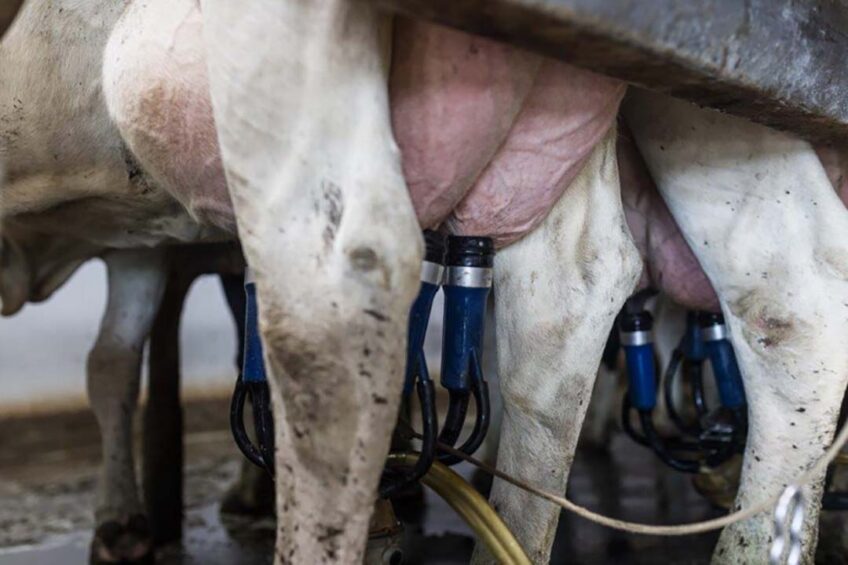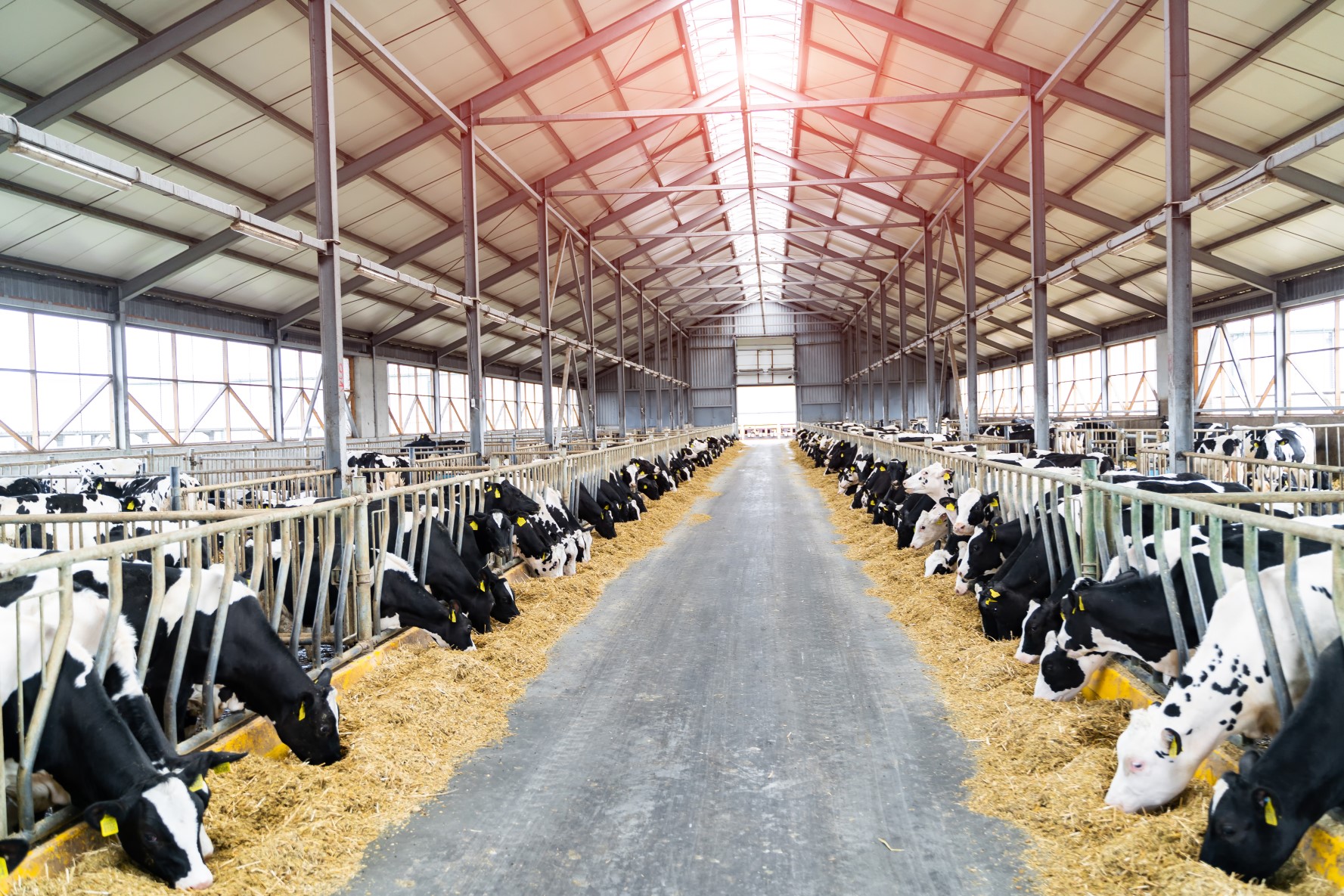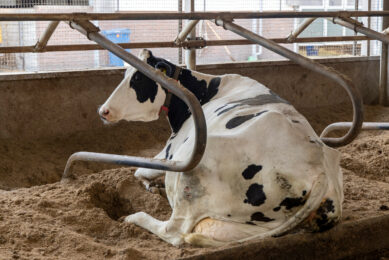Udder health: Harnessing the power of postbiotics (Part 1)

Mastitis, a persistent concern in commercial dairies, demands a comprehensive understanding and strategic approach. In this 2-part series, we delve into the critical aspects of udder health, focusing on nutrition’s pivotal role. In Part 1, we examine the intricate relationship between diet and mastitis, exploring how nutritional choices impact immune function and overall udder well-being. Join us on this journey to uncover the nuances of maintaining healthy dairy herds and the economic implications associated with it.
Mastitis, an inflammation of the mammary gland, is one of the most consistently recorded and tracked clinical issues in commercial dairies. According to recent North American surveys, it is one of the most common causes of morbidity in adult dairy cows. With yearly prevention costs ranging between US$70 and US$100 per cow, the economic impact of this disease is evident.
Good indicators of udder health are bulk tank somatic cell count and the rate of mastitis incidence. Somatic cells are a combination of shedding cells of the udder (epithelial cells, 20-30%) and immune cells that are always present in milk (70-80%). The latter is mostly made of white blood cells – its concentration increases in response to infections by mastitis-causing bacteria.
Through consistent efforts, American farmers were able to improve udder health of their herds, reaching an average milk-weighted bulk tank somatic cell count of 194,000 cells/mL in 2015, which was 25% lower than 10 years prior. However, despite advances in treatment and prevention, mastitis incidence in the same geography increased from 13% to 25% in the same time-frame (mostly due to better detection). This means that, on average, 25 out of 100 cows have a case of clinical mastitis in the current lactation.
Cows with stronger immune systems do better
Multiple factors contribute to mastitis rates such as environment and facilities management, milking parlour equipment and maintenance, milking procedures, and herd genetics. Without discrediting the importance of all these, diet is often overlooked as a contributing factor, but many nutrients play a role in maintaining and boosting dairy cows’ immune system. Although poor nutrition alone doesn’t necessarily cause mastitis, it can make it easier for bacteria to break through cows’ immune defenses and establish themselves in the udder, resulting in more cases.
The immune system has numerous different components, both pathogen-specific and non-specific, which can reduce or eliminate bacterial invasion of the mammary gland. Nutrition can impact these components in a variety of ways, resulting in either suboptimal or boosted immune function.
First, immune cells require specific nutrients, and when cows are fed a diet lacking them, this can impair their defenses, all the while still providing proper nourishment for other important functions, such as milk and components production. So, while a diet might support substantial milk production, at the same time the risk of mastitis can increase due to deficient immune function.
Second, proper nutrition can reduce the occurrence of metabolic conditions (e.g., fat cow syndrome, ketosis, hypocalcemia) that suppress immunity, helping reduce the risk of mastitis. Finally, nutrition can go beyond meeting requirements, and boost immune function beyond average.
Nutrition can play a significant role
Up to 3-quarters of all clinical mastitis cases occur in early lactation, with the majority of these being diagnosed in the first few weeks postpartum. This is in part due to the high incidence of metabolic disorders, which not only negatively impact production performances, but also negatively affect cows’ immune functions. Late lactation and dry cow diets should be formulated with the right levels of energy to avoid under conditioning (Body Condition Score < 2.75) or over conditioning (Body Condition Score > 3.5) animals approaching parturition. Both these scenarios have been linked to a failed transition into lactation and an increased risk for immune-suppressing conditions, which leads to a higher risk of contracting mastitis.

Looking to more specific nutrients, amino acids can play a boosting role for the immune system. Increasing dietary concentration of methyl donors, like methionine or choline, have been shown to improve immune cells pathogen-killing ability during the delicate transition period, with direct implication for the cow’s overall incidence of diseases. They also contribute to the production of glutathione and taurine, 2 powerful antioxidants. Taurine also directly benefits immune cells and has anti-inflammatory proprieties.
Glutamine supplementation has also shown positive results. This amino acid is non-essential, meaning the cow can produce it alone without needing it from the diet. However, its use by activated immune cells during inflammatory events increases drastically beyond the cow’s productive capacity, making it ‘conditionally essential’. Supplementing extra glutamine in rumen-protected form to transition cows has proven to reduce somatic cell count. Unfortunately, such a product is only available in research settings and a commercial version has not made it yet into the dairy nutritionist toolbox.
Calcium balance should also be a focus of transition diets, as cows that develop milk fever have a much higher risk of developing mastitis. Lack of calcium affects the udder both directly and indirectly. Immune cells need calcium to properly function, so do the muscles of the teat-end sphincter, the physical barrier that prevents bacteria to enter the udder. Affected cows tend to also spend more time laying down, increasing udder exposure to pathogens, and have greater plasma levels of cortisol, a stress hormone capable of suppressing immune functions. Formulating dry cow diets to provide proper amounts of calcium, phosphorus, and magnesium, and to contain the correct cation-anion balance, can reduce the incidence of mastitis via improved calcium status.
Out of all the nutrients that affect immunity and prevent mastitis from occurring, trace minerals like selenium, copper, zinc, and vitamins like vitamin A/β-carotene, vitamin D, and vitamin E are among the most researched, and those with the greatest effects on udder health. As building blocks in the cow’s antioxidant system, they help prevent damage to cells throughout the animal’s body, including the mammary gland tissue and the immune cells.
Most of the time, formulating diets to include an adequate amount of these micronutrients and meet their recommended requirements will allow you to maintain proper immune function. Increased doses of vitamin E and selenium beyond NASEM requirements have been proven effective in lowering somatic cell count and mastitis incidence, while all other mentioned vitamins and minerals have shown inconsistent results when fed beyond the requirement.
Although vitamins and minerals play an important role in the functionality of the immune system, be careful and well-aware about feeding too much of the latter, as this can be harmful. It’s all a balancing act.
As we conclude Part 1, it’s evident that nutrition is essential in preventing mastitis. Yet, there’s more to the story. In Part 2, we’ll unravel the exciting realm of postbiotic feed additives. Postbiotics offer a proactive approach to bolstering the immune system, aiming not just to treat but to help prevent mastitis. Stay tuned for the next installment, where we explore groundbreaking research and its implications for udder health in dairy cows.
Join 13,000+ subscribers
Subscribe to our newsletter to stay updated about all the need-to-know content in the dairy sector, two times a week.










